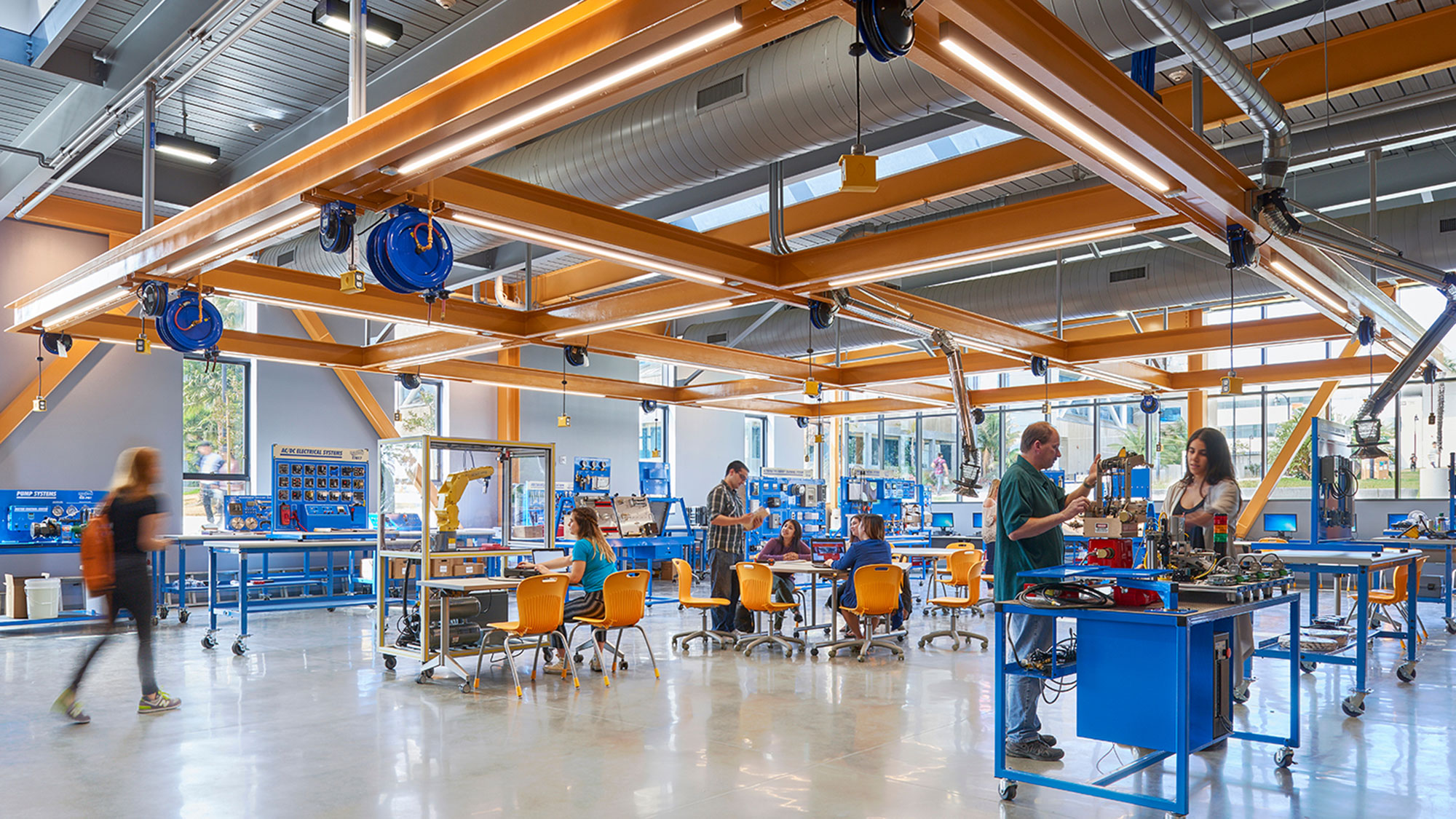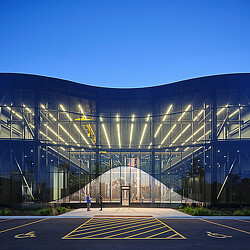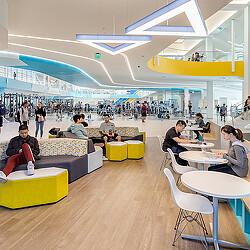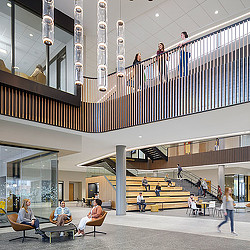Why Now Is the Time to
Double Down on the Promise of California Community Colleges
A look at how these essential institutions could drive local, inclusive economic recovery.

As the cost of living rises and income inequality grows, we need comprehensive strategies to support broad and inclusive economic recovery. While California has a robust economy — ranked fifth largest in the world — its benefits are not evenly felt. According to the latest available Census data, the state’s poverty rate is the highest in the nation and increasing, meaning that approximately 7.3 million state residents lack the resources to meet their basic needs.
Poverty in California tracks with education, as does income. Young people aged 25-34 with a college degree earn on average more than 70% more than their counterparts with no degree beyond high school. Economic mobility requires more than a safety net — workers also need access to opportunity.
As unfilled positions for skilled workers remain a key challenge for businesses and communities in California, community colleges have a vital role to play in connecting more people to career opportunities that pay a living wage.
A Pathway to Living Wages
California has a longstanding goal of boosting the number of residents with bachelor’s degrees. Historically, the state achieved its goal of reaching 40% of working-age adults by in-migration, as a substantial number of people moved to the state and brought their bachelor’s degrees with them. While 57% of 25- to 54-year-olds entering California from out-of-state have bachelor’s degrees, only 35% of California-born young adults have earned a bachelor’s degree.
Supporting an increase in college completion among young people growing up in in the state would generate more opportunity, while transforming communities, building wealth through educational mobility.
Now more than ever, access to a variety of higher education options is needed, as not all living wage jobs require a four-year degree. Students who earn a career education certificate or associate degree also see significant wage gains, and according to the research, the majority start earning middle-income wages within a year of earning their credential. Overall, credential holders saw an 8% wage gain for someone who earned a short-term certificate, a 21% increase for a long-term certificate, and a 32% bump for an associate degree.

Addressing the Skills Mismatch
A skills mismatch is growing in California, particularly with “mid-skill” jobs that require skilled workers with some college, including two-year associate degrees and certificates. These types of distinctions would support careers in nursing, teaching, police, and fire — shortages that significantly impact quality of life in our cities and create an additional drag on investment.
Today, seven out of 10 of California’s nurses receive their training at a California community college, as well as eight out of 10 police officers, firefighters, and EMTs. Current state projections indicate that the the skills mismatch is leaving many positions unfilled, including healthcare, medical technology, IT and software, and advanced manufacturing — as well as tradespeople like plumbers and electricians.
California Community Colleges (CCCs) offer the twin superpowers of social mobility and fuel for economic growth. CCCs are the largest educational system in the U.S., with 116 active colleges, and a total headcount of 2.1 million in 2024. After years of enrollment decline during and after the pandemic, enrollment is up by over 10% in 2023-2024, surpassing the state’s planning goals.
These institutions are seeing an enrollment resurgence as they reinvent themselves to support diverse student needs — increasing transfer rates to four-year degree programs and granting two-year associate degrees and certificates in Career Technical Education (CTE) fields. Currently, about a quarter of students transfer or complete their studies within six years, with 80,000 per year transferring to the University of California and California State University systems — however, these numbers are rising.
What’s Next for Community Colleges?
Community colleges are at a crossroads as state population growth is slowing, in large part due to the cost of housing and an aging population. While the number of 18–24-year-olds in the state is projected to decline, the need for skills training continues to grow. Community colleges are responding to this need with a focus on persistence and completion.
Innovations include investment in affordable student housing to support the high number of students struggling with housing insecurity while in school. Apprenticeship programs are also on the rise, with “earn to learn” programs that enable students to gain work experience and income while completing certifications and degree programs. Many CCCs are investing in programs and new facilities to enhance student success.
In San Francisco, the city formed a partnership between its public education institutions called “Bridge to Success” — bringing San Francisco Unified School District (SFUSD), City College of San Francisco (CCSF), and San Francisco State University (SFSU) together as partners to increase access to higher education and completion rates.
Key to meeting these goals is the Student Success Center at CCSF, a new building that will consolidate more than 30 student development programs such as academic counseling, tutoring, career centers, transfer centers. Improved access to services like these are key to increasing and maintaining future enrollment and course completion. The entire student body will be better served, especially historically marginalized student populations.

Rural communities often find that community colleges offer multiple benefits that extend beyond the students it serves. A new campus center in Hollister, California, will enable Gavilan College to serve the city with a modern facility that includes labs and classrooms, adding science education to their offerings. The facility also provides a variety of student services, a café and food pantry, and a multipurpose community room that can be used for everything from job fairs to Quinceañeras.

Helping First Generation Students Uplift Entire Families
California’s 116 community colleges serve the largest and most diverse student body in higher education. Currently, 35% of students entering CCCs are the first generation in their families to attend college, and more than 40% are adult learners looking for new opportunities. The focus on students not currently served by traditional four-year colleges is important, as there are 6.8 million adults between the ages of 25 and 54 who have a high school diploma but no postsecondary credential.
Public investment in CCCs is a smart way to strengthen communities by uplifting workers and their families. Research shows that for every dollar invested in California’s community colleges, people in the state receive more than $11 in return, as increased earnings, tax revenue, and reduced reliance on social services.
At a time when California’s equity gap must be addressed and the economy is in need of a boost, community colleges have great potential to bridge the divide and support continued recovery in the years to come.
For media inquiries, email .







